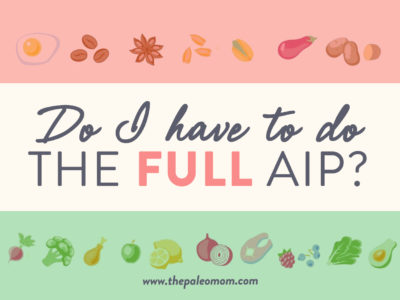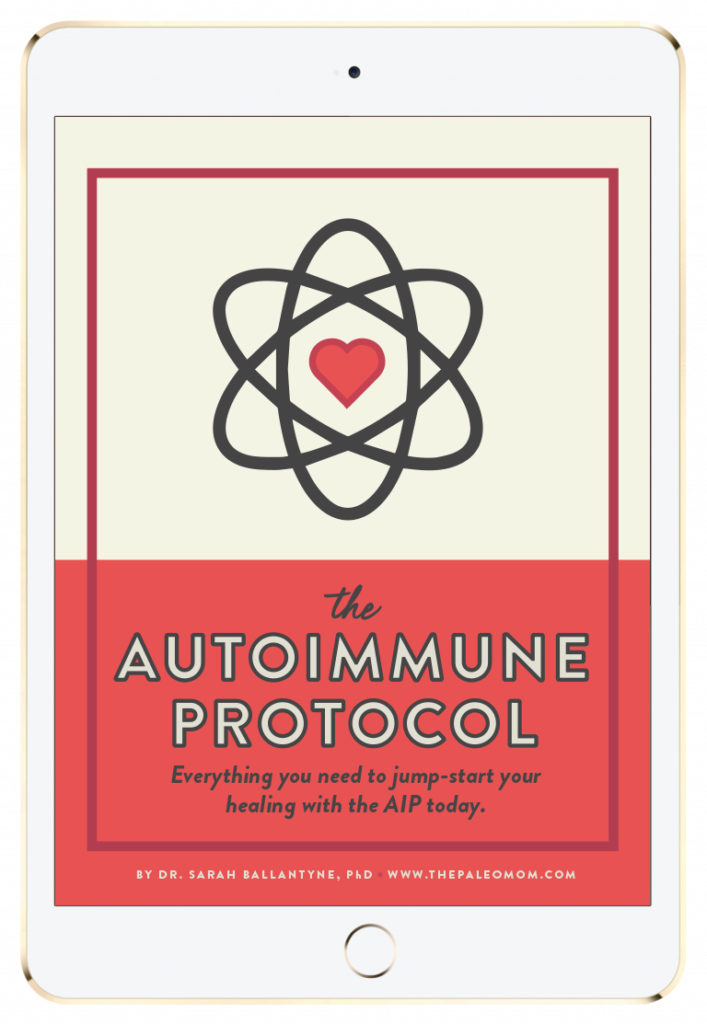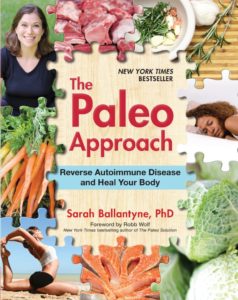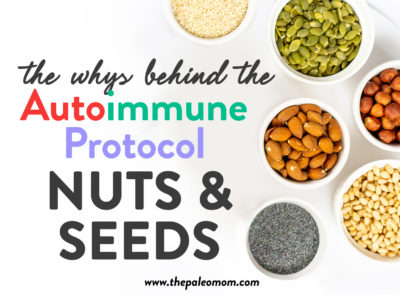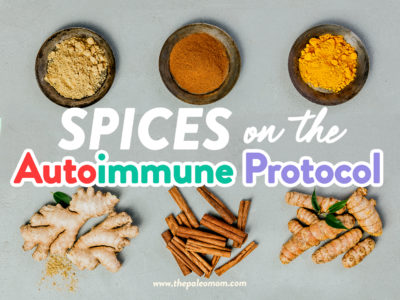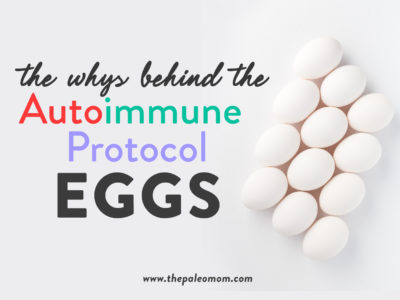The autoimmune protocol of the Paleo diet (AIP) is very effective at addressing autoimmune disease (and related conditions like allergies and non-autoimmune skin conditions) and for identifying food sensitivities. It is an elimination diet which restricts all of the most common food allergens/sensitivities as well as foods containing substances known to prime the immune system (like nightshades). If you combine this approach with food sensitivity testing, it’s even more powerful at addressing a huge variety of health conditions. However, it is really hard. It can feel very restrictive for those of us who have been following a Paleo diet for a while; and for those completely new to Paleo, it can be completely overwhelming.
I get asked the question frequently: “do I have to follow the full AIP?”. I also get asked “does it matter if you cheat/fall off the wagon on the AIP?” and “Isn’t it easier to just get tested for food sensitivities?”. Let me try and answer these questions one by one.
I believe that following the full autoimmune protocol is the most expedient way to address autoimmune disease and identify food sensitivities. However, it only works if you can stick to it! If it is simply not possible for lifestyle, budget or psychological reasons to follow the full autoimmune protocol 100% strictly, you can try to limit a couple of the food categories instead of all of them. I have explained many of the whys behind the various restrictions in the autoimmune protocol (see this page for a list) and you can use these posts (and your personal history) as a general guide for prioritizing what foods you omit from your diet. As a basic starting point, I would highly recommend at the very least omitting nightshades from your diet. Egg whites would be the next most likely culprit, in my opinion. This may be an iterative process for you. Instead of jumping in with both feet, you can try omitting nightshades, see how you do, add in the omission of egg whites, see how you do, omit whole eggs, nuts and seeds, see how you do… The full throttle, cold turkey approach works well for some and, for those who can pull it off, is more likely to yield fast and dramatic improvement in symptom. But it isn’t for everyone; and it doesn’t need to be.
If you are new to Paleo, you may find great relief of your symptoms with a standard Paleo diet, so it is definitely worth trying that first before tackling the challenge of the autoimmune protocol. It can take a while to get used to this way of eating, depending on how you ate before, both in terms of figuring out where to buy quality ingredients and how to cook them, and also in terms of resetting some basic assumptions about what meals should look like. You may have to reprogram your basic responses to food; for example, you may need to stop reflexively recoiling from high fat foods in fear that they will make you fat and cause heart disease. You might have to let go of the concept of “healthy whole grains” or that you need to drink milk for healthy bones. You might have to get over your fear of organ meat. You might have to get used to cooking more often. And your body may go through a sluggish, cravings-filled adjustment period as it adapts to a lower carbohydrate/sugar diet. After a month or two of a regular Paleo diet, once you feel like you have adjusted and it doesn’t seem in itself to be so overwhelming, then you can evaluate whether additional dietary restrictions may be helpful for you. However, I do need to add that if you are really struggling with disease, you might consider adopting a nightshade-free Paleo diet from the start and try to find alternatives to eggs for breakfast that work for you.
Does it matter if you cheat on the AIP or fall off the wagon temporarily? Well, the answer to this is “it depends”. It depends on what you cheat with, how much you eat, how often you cheat, and what your specific health conditions and food sensitivities are. I think it’s very important not to eat any of the basic Paleo diet restricted foods. This means absolutely no grains (and especially especially no gluten-containing grains), absolutely no legumes (especially especially soy and peanuts), and I urge strong caution with dairy (especially pasteurized conventional dairy). You can try some grass-fed butter or ghee and see how you do, but it would be better to omit dairy completely at least for a few weeks. Refined sugars and processed food chemicals may also cause a shockingly strong reaction, especially once you’ve been following a Paleo diet for a while. As for the AIP-restricted foods: tomatoes have the ability to rev the immune system so alarmingly that it can take months to calm it back down again. Other nightshades can have similar effects, although maybe not as dramatically as tomatoes. Egg white proteins can act as carrier molecules to bring proteins that activate the immune system across the lining of the gut, which is especially a problem if you are reacting to bacterial proteins from your gut microflora. And any food that you have a food sensitivity to will cause an exaggerated response (in my case, that’s almonds). But as for a little bit of wine, a small handful of nuts, a square of dark chocolate, egg yolks, a sweet potato, a coconut-flour pancake with maple syrup? You might tolerate those things. Even if you don’t tolerate them, they may only set you back a little. Of course, they might be disastrous. The trick is to find a balance between what your body will tolerate and what it needs to heal. This needs to be sustainable for you so you adhere to the protocol as strictly as is possible. If that means allowing yourself a little dark chocolate (and providing you don’t react very strongly to dark chocolate), then that makes a whole lot of sense. Will completely falling off the wagon for a couple of days set you back to ground zero? It might or it might not. It is certainly an opportunity to reevaluate what you need to change to make this work for you so that you can have success at addressing your health conditions.
Is it easier to just get tested for food allergies and sensitivities? Well, it is and it isn’t. Some people will have food sensitivities to foods that are allowed on the AIP. In this case, even following the AIP 100% will not be sufficient to see substantial alleviation of your symptoms (and I have a whole post about this coming soon). In the case of nightshades, eggs, caffeine and alcohol (and NSAIDS, even though they aren’t a food), they can be problematic in a way that is not a food allergy or sensitivity, so you will very likely have to try an elimination diet strategy with those foods anyway. Food sensitivity testing also won’t tell you if starchy vegetables are feeding Small Intestinal Bacterial Overgrowth or if you have a FODMAP-sensitivity. However, if getting food sensitivity testing done is within your budget, then I definitely recommend it as the information will still be very useful for you. Also, if you continue to have issues after following the AIP very strictly for several months, food sensitivity testing may help you find the missing link. However, not all foods are tested for and some sensitivities may still be missed. In this case, you may wish to work with a naturopathic physician or nutrition-savvy physician or chiropractor to do an even stricter elimination diet approach to narrow in on the culprits.
So, do you need to do the full AIP? I think that following the AIP strictly for at least a couple of months is the fastest way to see improvement in your symptoms. But no, it is not completely necessary and there other ways to approach disease management and identification of food sensitivities. Just like everything else in the Paleo world, this is individual and you need to find what works for you.

